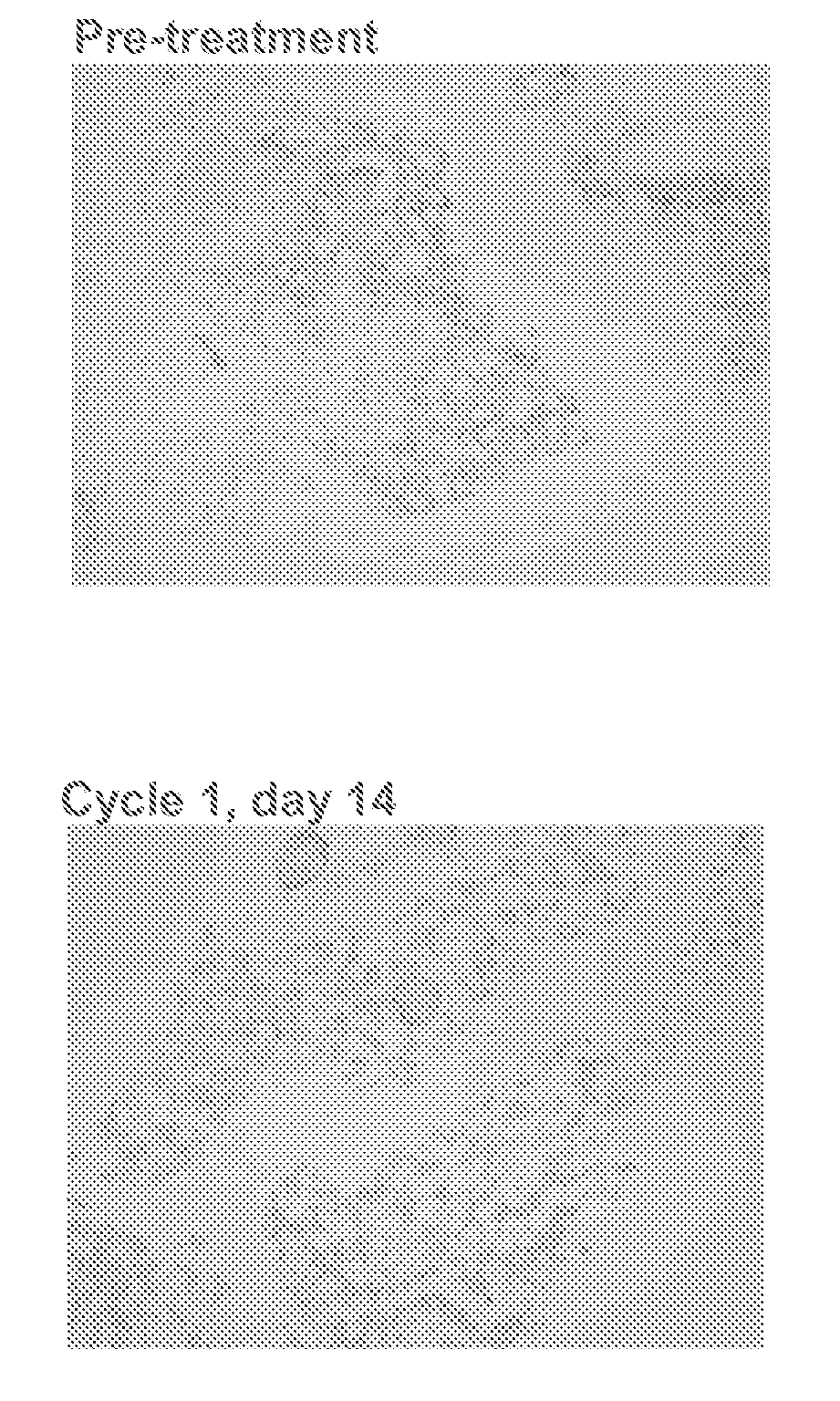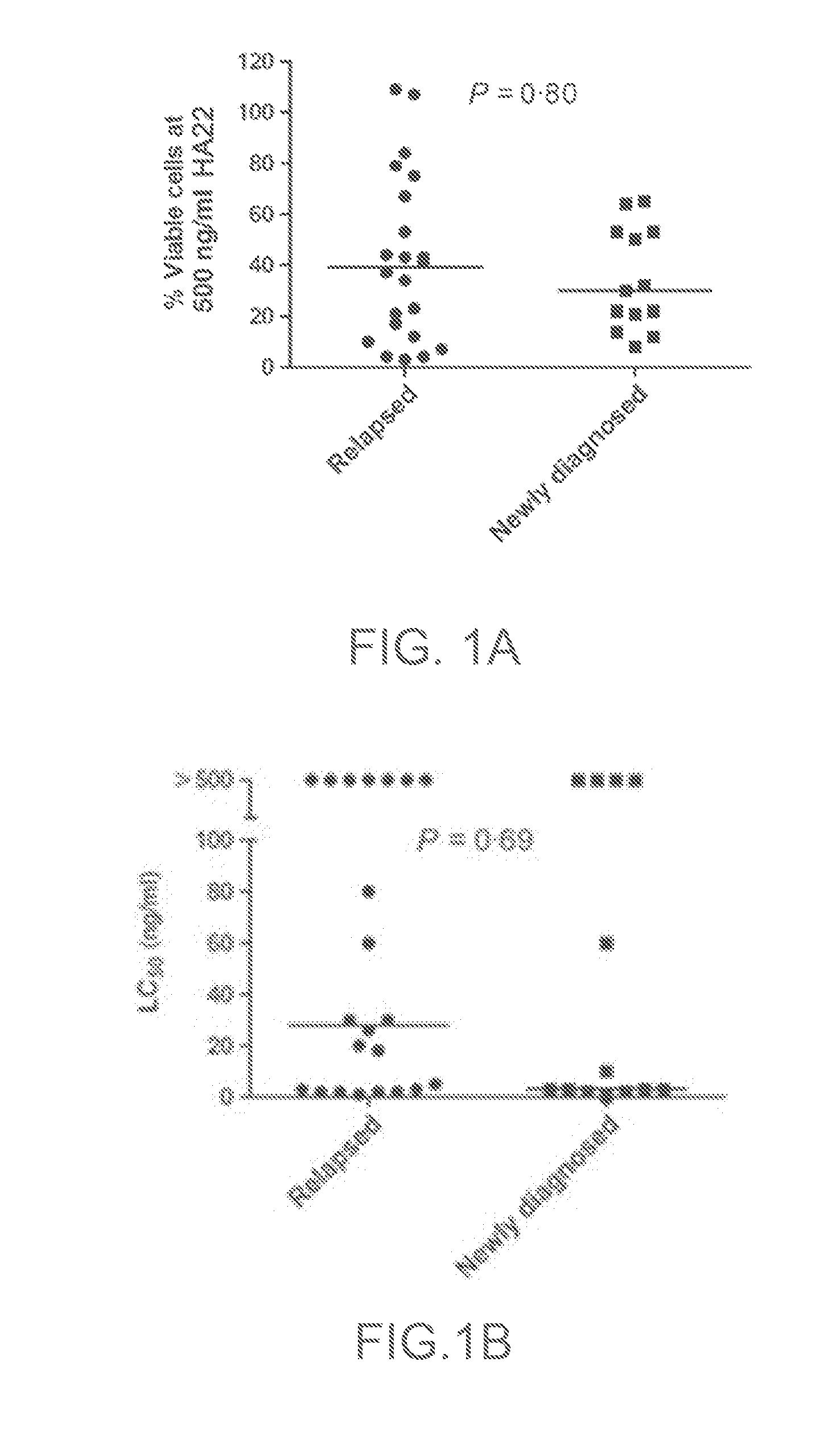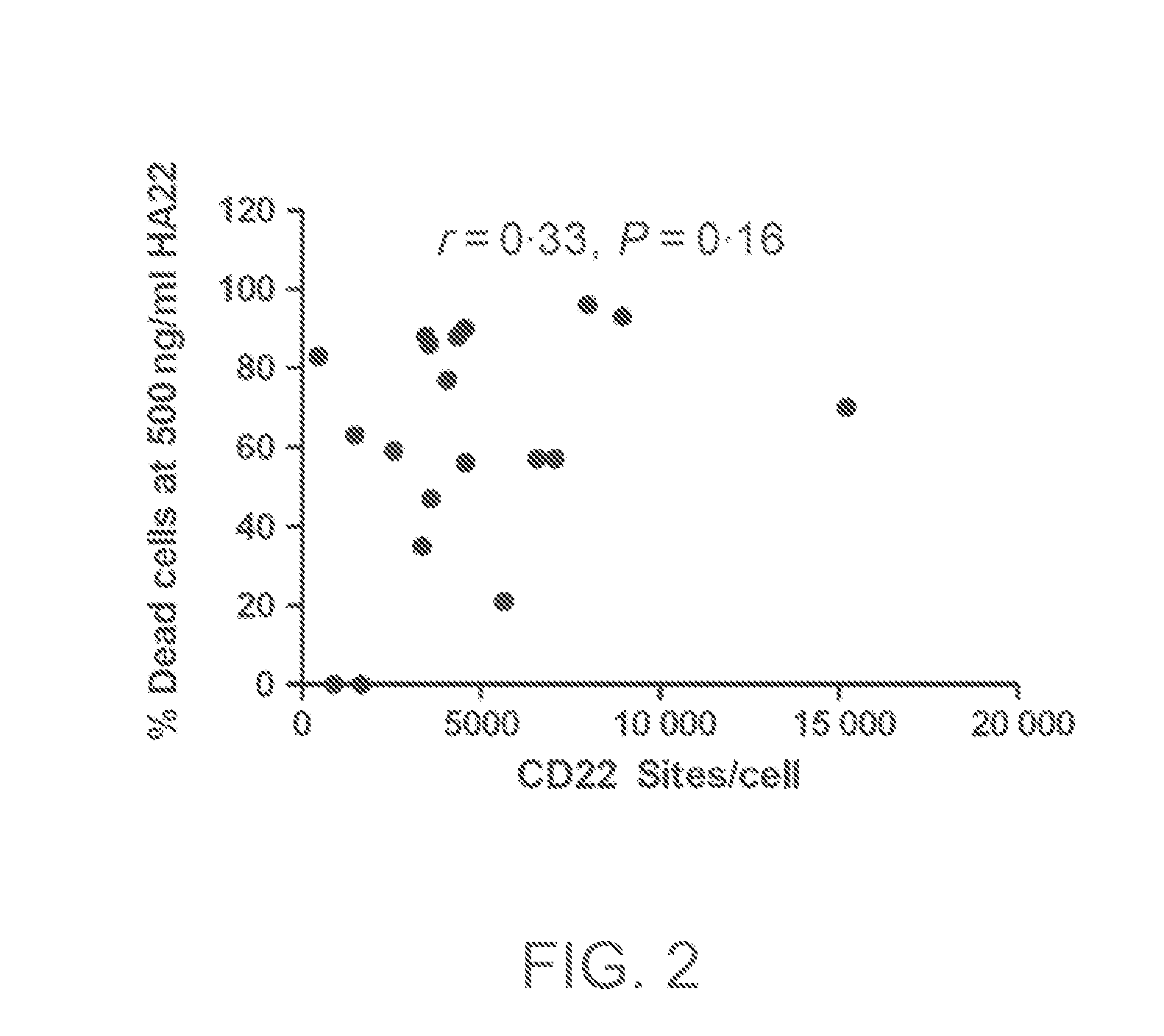Methods of Treating Pediatric Acute Lymphoblastic Leukemia with an Anti-CD22 Immunotoxin
an acute lymphoblastic leukemia and immunotoxin technology, applied in immunology, therapy, antibody medical ingredients, etc., can solve the problems of affecting the survival rate of patients with acute lymphoblastic leukemia, the risk of treatment associated morbidity and mortality, and the inability of conventional therapies to induce long-term complete remission, etc., to inhibit the growth of cd22-expressing cells
- Summary
- Abstract
- Description
- Claims
- Application Information
AI Technical Summary
Benefits of technology
Problems solved by technology
Method used
Image
Examples
example 1
[0155]This Example sets forth the materials and methods in the studies reported in Example 2. See, Mussai F., et al., Br. J. Hematol. 150:352-358 (2010), which is hereby incorporated by reference in its entirety.
ALL Samples
[0156]Blood and bone marrow samples were obtained from 35 patients with B-lineage ALL (Table SI) treated at the National Cancer Institute (NCI), St Jude Children's Research Hospital (SJCRH) or Johns Hopkins Hospital (JHH) with informed consent. The majority (n=22) were obtained from individuals with multiply relapsed ALL who were referred to the NCI for Phase I clinical trial participation. Thirteen patient samples from initial diagnosis were randomly selected from those available in the tumor banks at SJCRH and JHH. Thirty-three cases were characterized as pre-B ALL by flow cytometry and two as Burkitt-type / mature B-cell ALL. In all cases, >80% blasts expressed CD19 and CD22 antigens by flow cytometry. Cells were cryopreserved in RPMI-1640 medium with 10% fetal b...
example 2
[0165]The studies reported in this Example set out the results of in vitro cytotoxicity assays of CAT-8015 against pediatric ALL cells. These results demonstrate that the anti-CD22 immunotoxin CAT-8015, at concentrations achievable in patients, is highly cytotoxic to B-lineage ALL cells.
[0166]Summary: In vitro cytotoxicity of CAT-8015 against ALL blasts from newly diagnosed (n=13) and relapsed patients (n=22) was assessed using a bone marrow mesenchymal cell culture assay. There was interpatient variability in sensitivity to CAT-8015. Twenty-four of the 35 patient samples were sensitive (median 50% lethal concentration 3 ng / mL, range 1-80 ng / mL). Blasts from the other 11 patients were not killed by 500 ng / mL CAT-8015. The median 50% lethal concentration was 20 ng / mL for all patients. There was no significant difference in CAT-8015 sensitivity between diagnosis and relapse samples but peripheral blood ALL blasts were more sensitive to CAT-8015 that those from bone marrow (P=0.008).
Cy...
example 3
CAT-8015 (HA22) Phase I Clinical Trial
Study Design
[0179]Selected Inclusion Criteria: Patients ≧6 months of age and <25 years of age with CD22+ B-lineage ALL or Non-Hodgkin Lymphoma (NHL) (≧30% abnormal cells as detected by fluorescence-activated cell sorting (FACS), ≧15% abnormal cells as detected by immunohistochemistry (IHC) relapsed or refractory to standard curative therapies were eligible for enrollment into the Phase I clinical trial.
[0180]Selection Exclusion criteria: Patients presenting isolated testicular or CNS disease were excluded. Also, patients with prior treatment with any Pseudomonas exotoxin compound were excluded from the trial.
[0181]Dosing: CAT-8015 (HA22) was administered at doses of 5 μg / kg, 10 μg / kg, 20 μg / kg, or 30 μg / kg ever-other-day for 6 doses every 21 days for up to 6 cycles. Doses were administered as 30 minute IV infusions.
[0182]Dose escalation phase: An accelerated dose escalation protocol was established wherein one patient was enrolled at each of the...
PUM
| Property | Measurement | Unit |
|---|---|---|
| concentration | aaaaa | aaaaa |
| concentration | aaaaa | aaaaa |
| concentration | aaaaa | aaaaa |
Abstract
Description
Claims
Application Information
 Login to View More
Login to View More - R&D
- Intellectual Property
- Life Sciences
- Materials
- Tech Scout
- Unparalleled Data Quality
- Higher Quality Content
- 60% Fewer Hallucinations
Browse by: Latest US Patents, China's latest patents, Technical Efficacy Thesaurus, Application Domain, Technology Topic, Popular Technical Reports.
© 2025 PatSnap. All rights reserved.Legal|Privacy policy|Modern Slavery Act Transparency Statement|Sitemap|About US| Contact US: help@patsnap.com



